- How to Propagate Monstera Guide: The Three Ways to Succeed - September 17, 2021
- Escargot Begonia: Why Is The Rex Begonia So Rare? - August 31, 2021
- Rieger Begonia: When You Can Expect The Hiemalis Begonia To Flourish - August 31, 2021
This is a compact-size tropical plant that comes in many different varieties or cultivars. The most common cultivars are Emerald Ripple Pepper, Silver Heart, and Ivy-Leaf Peperomia.
All varieties or cultivars of Peperomia are easygoing and unfussy plants. They are ideally suited as an indoor plant or as part of a window sill garden. Not only do these quaint plants make it easy on gardeners, but they also look great while doing so.
How to Identify Peperomia Caperata
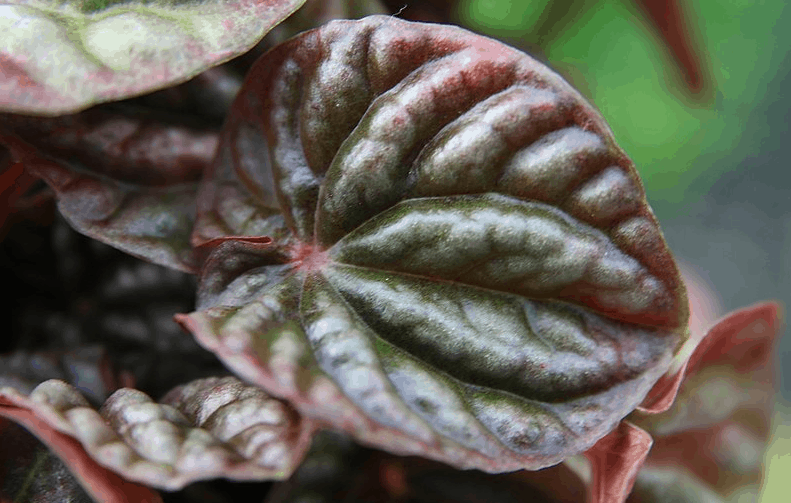
Although this particular plant comes in many different cultivars, which vary in some of their features, they all still have a few common key identifying features. These features are:
- Heart-shaped leaves
- Furrowed leaves
- Cream-colored inflorescence that grows as small spikes
- Pink or red petioles
How to Grow Peperomia Caperata from Seeds
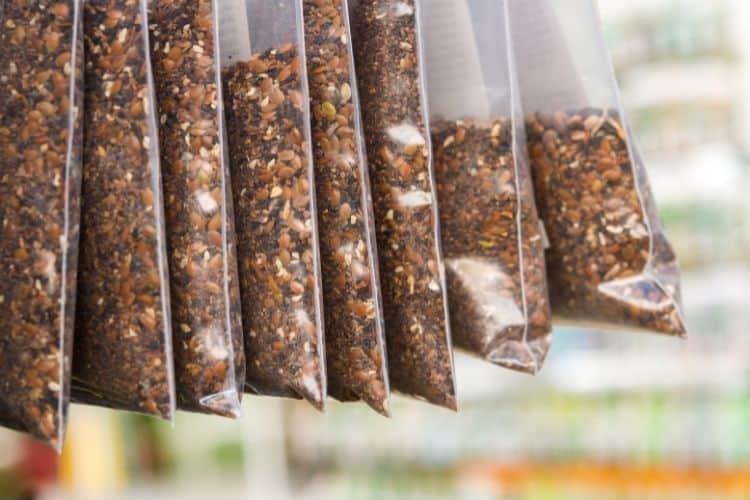
While this is not the preferred method for growing one of these plants, it does not mean that you should not try. If you are determined to grow one of these via seeds, follow these steps:
- Purchase seeds from a reputable seller (sellers who price their seeds between $1 and $2)
- Fill a container with a soilless seed starting mix
- Plant the seeds in the seed starting mix
- Water the mix so that it is moist but not soggy
- Place plastic wrap over the top of the container
- Set the container in a warm spot that gets plenty of bright, indirect sunlight
- Once sprouts appear, transplant the seeds to a container filled with soil that has a pH level between 6 to 6.5
How to Propagate Peperomia Caperata
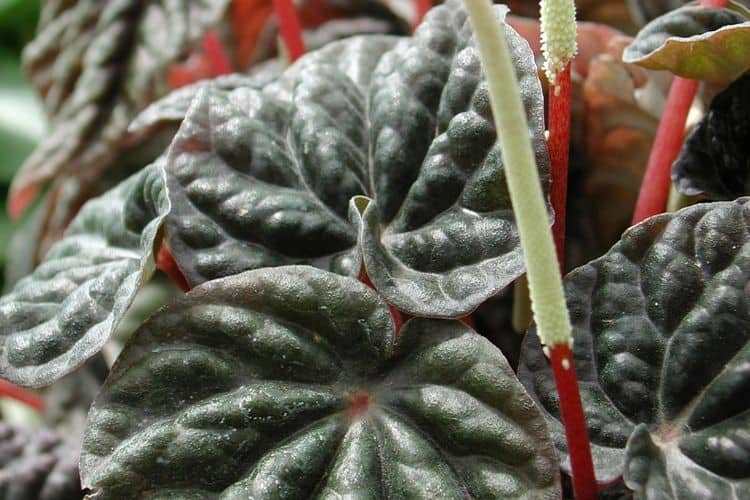
The preferred method for propagating one of these plants is leaf cuttings but this plant can also be propagated via division. Both methods are simple and straightforward processes that can be done during spring pruning sessions or whenever you feel that it’s time for your plant to be repotted.
The Leaf Cutting Method:
- Clean a pair of scissors or another type of cutting utensil
- Cut off a healthy leaf that includes a petiole
- Set the leaf out for a few days to allow it to callus
- Fill a plant container with well-draining soil that includes 50% peat and 50% perlite
- Dip the end of the leaf in a rooting hormone
- Stick the leaf into the soil
- Set the plant container in an area that is warm and receives plenty of indirect or filtered sunlight
- Water the new plant when the top layer of its soil is dry
Note: You can actually grow two new plants from one leaf if you cut them in half. The part that contains the petiole will grow faster than the part does not, but they are both capable of growing new plants.
The Plant Division Method
- Carefully remove the plant from its container
- Gently dust off its roots without touching them a lot
- Use the clean cutting utensil to separate stems and roots
- Repot each section in clean and well-draining potting soil
- Set the new plants in an area that is warm and receives plenty of indirect or filtered sunlight
- Water the new plants when the top layer of their soil is dry
Peperomia Caperata Growing Conditions
High temperatures and humidity levels should be the constant companions of these tropical plants. If you don’t want to keep your home 65 and 75 degrees Fahrenheit with humidity levels of at least 40%, you can purchase a Pebble tray or a Plant humidifier to provide extra humidity and a Plant Heat Mat to provide extra warmth.
These technologies allow you to keep your plant comfortable and cozy while not getting stuffy and sticky in your own home.
How to Plant Peperomia Caperata
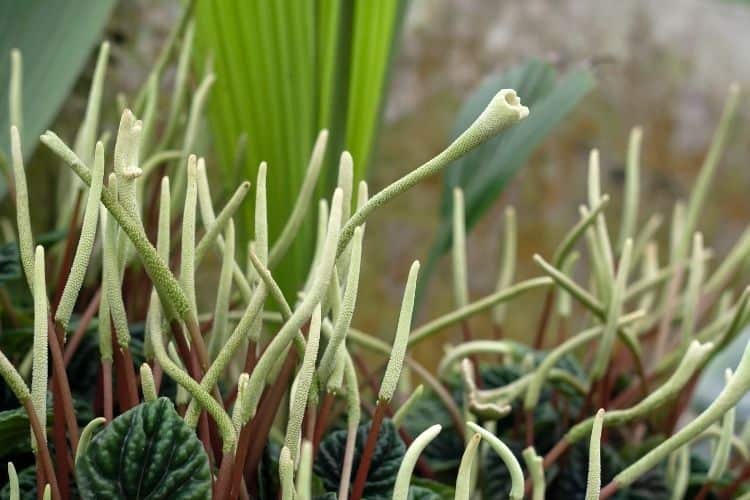
Most Peperomia varieties do not mind being tight and cozy in their plant container . Nevertheless, it is still beneficial to repot these plants every two to three years. The new soil will provide the plant with extra nutrients and help keep the pot clean from pest infestations and diseases.
Keep an eye out for the following signs to know whether or not your plant needs repotted before two to three years has passed:
- Compacted Soil
- Roots that are crowded and growing into a ball formation
- A plant that looks too big for its current container
When it comes time to repot your Peperomia Caperata, follow these steps:
- Fill a container with potting soil (if the plant has outgrown its current container, choose a new container that is two inches larger in diameter)
- Create a hole in the soil for the plant to set inside
- Carefully remove the plant from its current container
- Gently dust off any excess soil from its roots
- Set the plant into the hole in the new container
- Spread the soil around so that the plant is secure in its new container
- water the plant
- Set it in a warm spot with indirect sunlight
Peperomia Caperata Potting & Soil
Proper potting soil and a proper plant container can reduce the chance of root rot, pest infestations, and other diseases plants face. Both the potting soil and the plant container need to be capable of draining off excess water.
Try these recommended products for your Peperomia Caperata:
Peperomia Caperata Water Requirements
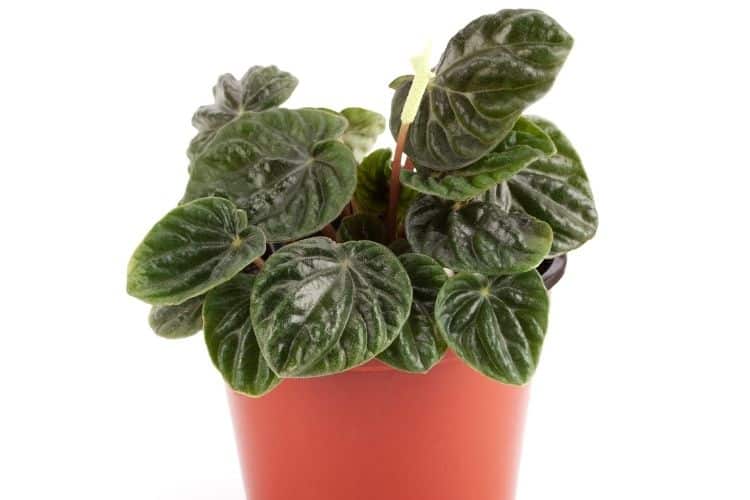
Proper watering is one of the most important aspects of gardening. Since Peperomia Caperata is highly susceptible to rot from overly saturated soil, it is best to use the soak and dry method watering it. It is a very simple method with six steps:
- Test the plant’s soil before watering it. It should only be watered if the top two inches are dry. If those top two inches are still moist, wait another day to water it.
- Fill a tray or a tub with water.
- Set the plant container in the water, but make sure the water isn’t so deep that it will overflow the lip of the container. The point of the soak and dry method is to use the drainage holes in the plant container to soak up water from the bottom.
- Let the plant soak up water for fifteen minutes.
- Remove the plant from the water.
- Set the plant in a spot where the excess water can drain from the container’s drainage holes.
Try using a plant watering app to reduce or remove any hesitancies you may have about watering your plants. These apps will assist you in keeping track of when you watered your plants, remind you to water your plants, and answer questions about your plants. It couldn’t be easier.
Peperomia Caperata Light Requirements
The best type of sunlight for a Peperomia Caperata is bright sunlight that is either filtered by a shade or is indirect. This type of sunlight will provide the plant with the light it requires to grow strong and healthy but it will not dry out its delicate leaves.
If you are uncertain about how to properly set up your plant for sunlight success, use either a light meter or a light meter app to assist you.
Best Peperomia Caperata Fertilizer
Since Peperomia Caperata does not need to be fertilized very much or very often, you should only plan to feed it at 50% dosage during spring and summer. Spread out these feedings every 2 to 4 weeks during this time frame.
Try Cute Farms Succulent Cacti & Aloe Fertilizer for this plant.
Best Peperomia Caperata Companion Plantings
These are the sort of plants that can benefit from clustering. When humidity-loving plants are set up this way, they share their humidity and raise the humidity levels in the room.
By owning several of these plants, you are guaranteed both an aesthetically appealing room or garden and healthy plants. Here are a few plants that will provide your Peperomia Caperata with extra humidity and aesthetic appeal.
Pilea Moon Valley
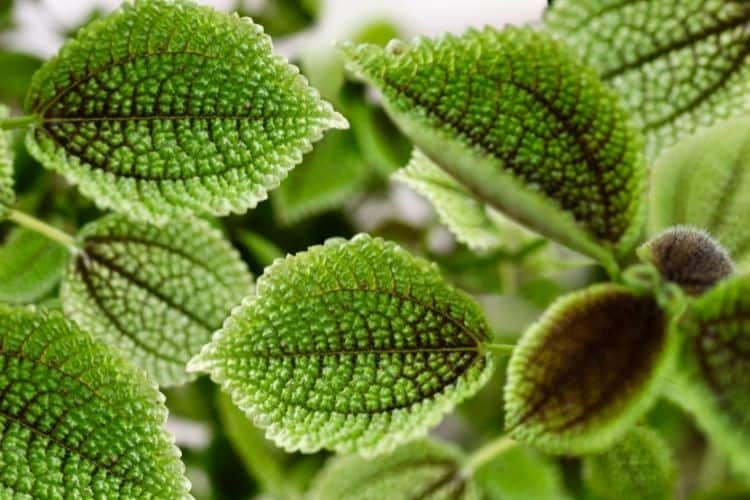
This is another plant that is native to warm and humid regions of South and Central America. Not only does this plant hail from the same land as Peperomia Caperata, but they also have many common care requirements and identifying features.
Pros
- Pilea Moon Valley requires the same temperatures and humidity levels that Peperomia Caperata does
- Pilea Moon Valley is not toxic
- Pilea Moon Valley is easy to care for
Cons
- Pilea Moon Valley is not cold hardy
Pilea Glauca
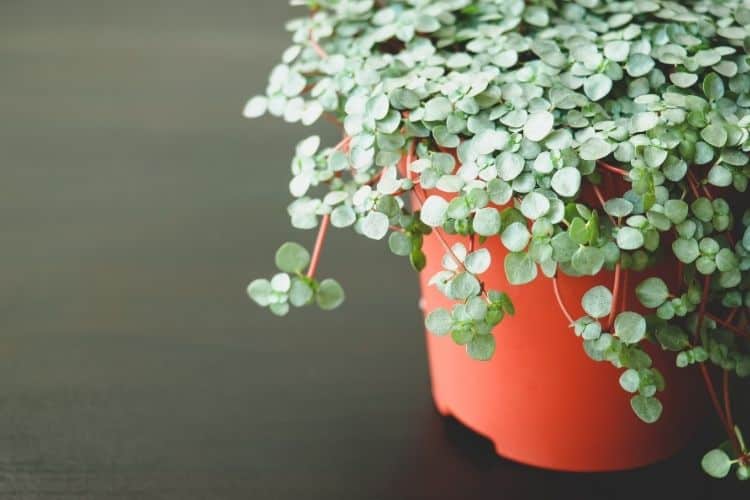
Here is another member of the Pilea plant family that will look beautiful next to your Peperomia Caperata. It has a lot in common with Peperomia plants and which will make gardening them alongside each other a breeze.
Pros
- Pilea Glauca can reproduce itself through pups
- Pilea Glauca requires the same temperatures and humidity levels that Peperomia Caperata does
- Pilea Glauca is not toxic
- Pilea Glauca can purify indoor air
Cons
- Pilea Glauca is not cold hardy
- Pilea Glauca is susceptible to aphids, mealybugs, and spider mites
Pothos Varieties
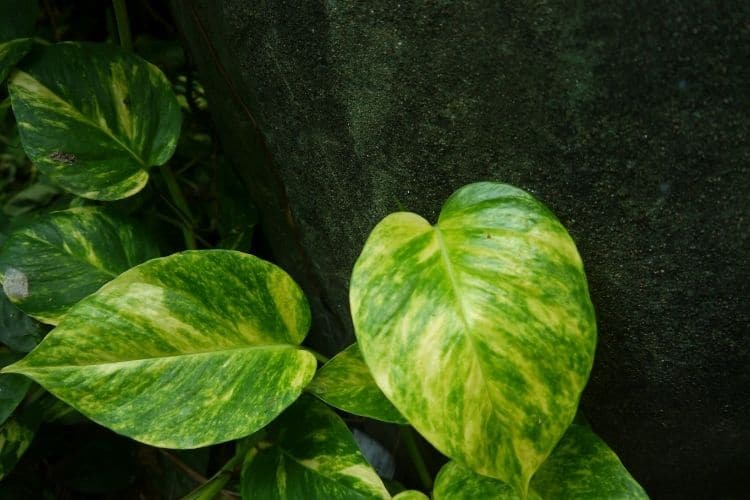
These plants are also native to tropical regions of the world, and therefore, will share many care requirements with their Peperomia Caperata. Pothos plants are also very unfussy plants, which will make it a breeze to care for both types of plants side by side.
Pros
- Pothos plants require the same temperatures and humidity levels that Peperomia Caperata does
- Pothos plants are easy to propagate
- Pothos plants are extremely easy to grow and care for
Cons
- Most Pothos varieties are toxic
Peperomia Caperata Diseases and Common Problems
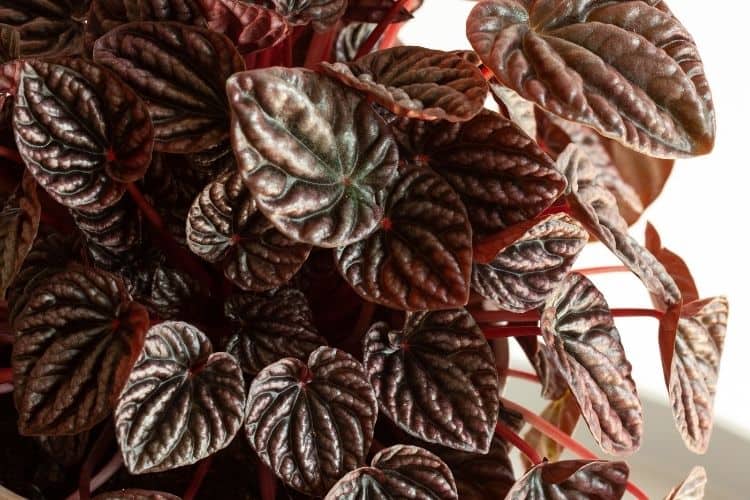
Here is a list of the most common issues faced by these plants. In this list is information on how to identify and treat each issue.
Mealybugs
Evidence of an infestation of mealybugs is small white spots that look like cotton on leaves and stems. To deal with an infestation of mealybugs, follow these steps:
- Spray a solution of alcohol and water on the leaves
- Rub the leaves with a cotton ball
- Coat the leaves in neem oil or insecticidal soap every few days
Root Rot
This is caused by overwatering a plant. If you learn how to properly water your plants, they should not get root rot. If, however, you are suspicious that your plant is suffering from this, look for these symptoms:
- Stems and leaves that are black
- Stems and leaves that are translucent
- Stems and leaves that are mushy
- Leaves that are dropping off regularly
A plant that is suffering from root rot should be allowed to dry out for a few days or weeks. There’s no need to water the plant during this time. From the trim off leaves and stems that are black, translucent, and mushy. If drying out the plant does not work, it may be best to replace the plant’s soil altogether.
Spider Mites
Evidence of a spider mite infestation will show up as webbing on the leaves and stems. Sometimes the tiny insects will even be visible crawling around the plant.
To treat this type of infestation, fill a spray bottle with a quart of warm water, 1 tsp. of dish soap, and 2 tsp. Of neem oil. Use this mixture to spray and wipe the leaves and stems of the plant clean. It may be necessary to repeat this process several times to rid the plant of all the insects.
Yellowing Leaves
Figuring out what is causing the leaves of a plant to turn yellow will be a process of elimination. It could be caused by any of the following:
- excessive sunlight
- too little or too much water
- Nitrogen deficiency
Peperomia Caperata Treatments and Maintenance
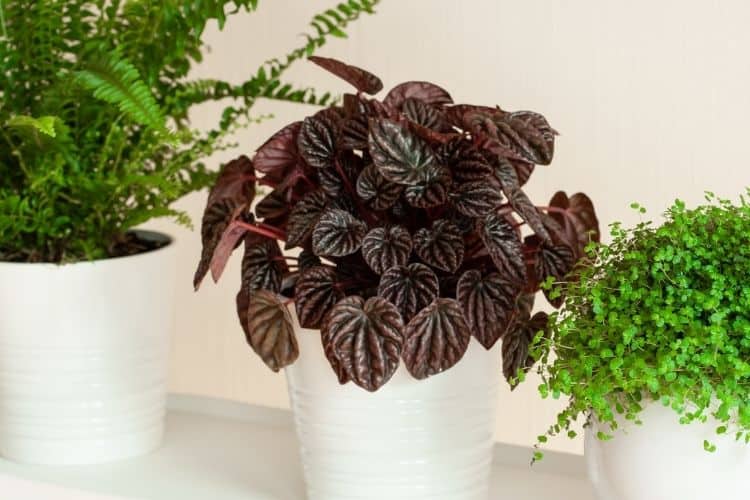
If you want healthy plants, learn what their care requirements are and learn a few maintenance techniques to keep them in optimal health. Remember, prevention is better than treatment. Here are a few tips to help keep any of your plants healthy and disease-free:
- Check it for signs of disease and infestations regularly, and treat them quickly.
- Clean the plant regularly with neem oil.
- Learn how to properly water and feed your plant.
- Make sure your plant is set in an area with adequate amounts of sunlight, heat, and humidity.
- Mix diatomaceous earth into the soil of potted plants.
Where to Buy Peperomia Caperata Seeds Online
Before you purchase seeds online, confirm that the seller is reputable and is selling a correctly labeled product. If you would like to purchase seeds to grow your own Peperomia Caperata, start with these online shops:
Where to Buy Mature Peperomia Caperata Online

Purchasing these plants online is fun and easy. Just look for online shops that have good reviews and ratings. Here are a few to get you started:
FAQs
Question: Is Peperomia Caperata Toxic?
Answer: No, this is not a toxic plant.
Question: How Large Does Peperomia Caperata Grow?
Answer: This is a compact plant that grows up to 8 inches tall.
Question: Can Peperomia Caperata Grow Under Grow Lights?
Answer: Yes, these plants grow well under artificial lighting.
In Conclusion
Peperomia Caperata is another cute and quaint little plant that is perfect for all gardening styles and for all gardening skills. Whether you are a novice or a professional gardener you are going to enjoy growing any of the cultivars of this plant in your home or garden space.

